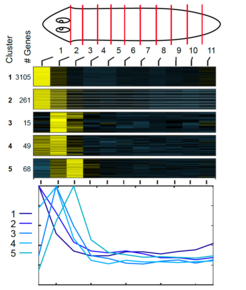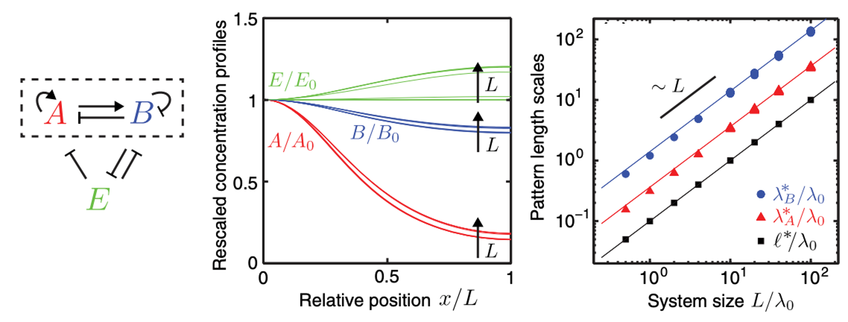Patterns and Regeneration

Some of the head-centred gene expression patterns obtained by deep sequencing the indicated tissue slices (Stuckemann et al. 2017).
Even though the pluripotent adult stem cells of planarians are equally abundant in the head and tail, they only make eyes in the head. But in a severed tailpiece, the resident stem cells give rise to eyes during head regeneration. Planarian tissue fragments not only carry the latent ability to regenerate all other parts but to also restore the shape and proportions of the planarian body plan irrespective of the starting point. Overall, this entails the existence of a molecular coordinate system that guides stem cell lineage choices at steady state, self-organizes in regenerating tissue pieces and is capable of scaling over a wide range of body sizes.
Our goal is to identify the component patterning pathways and their dynamic interplay that ultimately generates and re-generates the planarian body plan. We and others have shown that signaling gradients are important constituents of the molecular coordinate system, with for example a tail to head Wnt gradient patterning the planarian A/P axis (Stuckemann et al. 2017). Current projects in the department screen for missing patterning signals, address molecular and conceptual mechanisms of gradient formation and scaling (Werner et al. 2015), investigate the influence of gradients on cell fate choices or chase the molecular basis of polarity, i.e., why tissue pieces always regenerate head and tail in alignment with the original body axis.
Questions we are interested in
With tissue shape and size as experimental variables, planarians are uniquely suitable for addressing many fascinating and fundamental challenges, including the following:
- How to establish signaling gradients with length scales far beyond the effective range of free diffusion?
- How to achieve pattern scaling over 1.5 orders of magnitudes or how to encode proportions, i.e., the length scale coordination of multiple body axes?
- How to reconcile the collective self-organization of patterns in amputation fragments with their robust maintenance in non-regenerating animals?
- What are the salient features of patterning networks that define shape & proportions or the regenerative abilities of a species?

Self-organizing pattern reaction scheme including an expander (E), that allows pattern scaling over 3 orders of magnitude (Werner et al. 2015).

